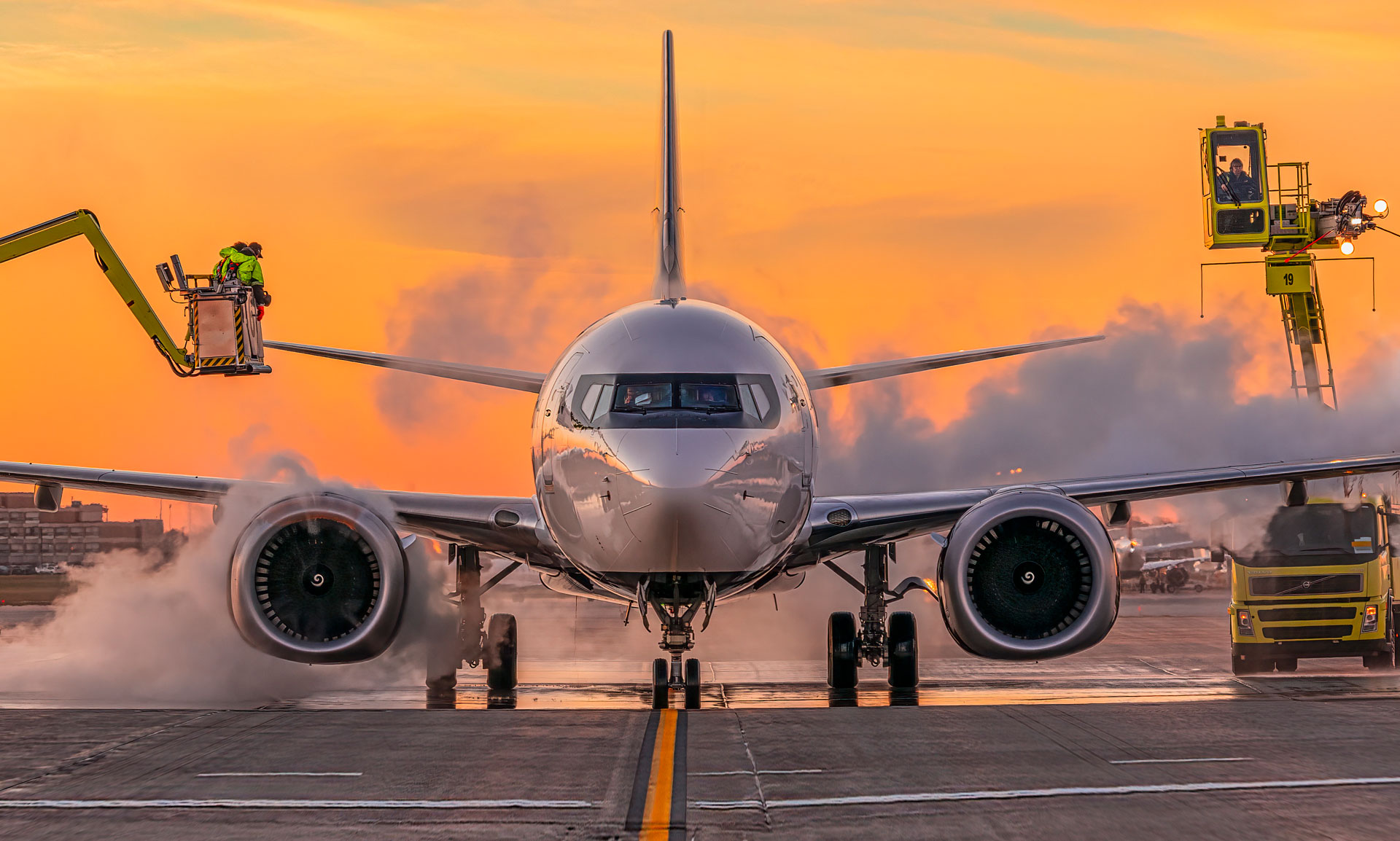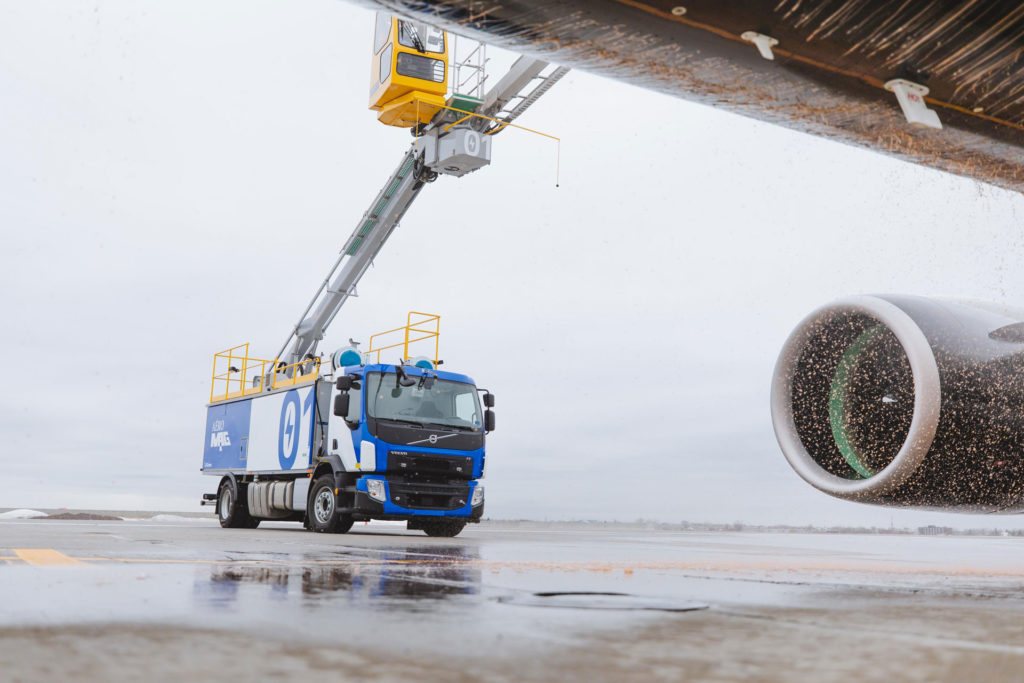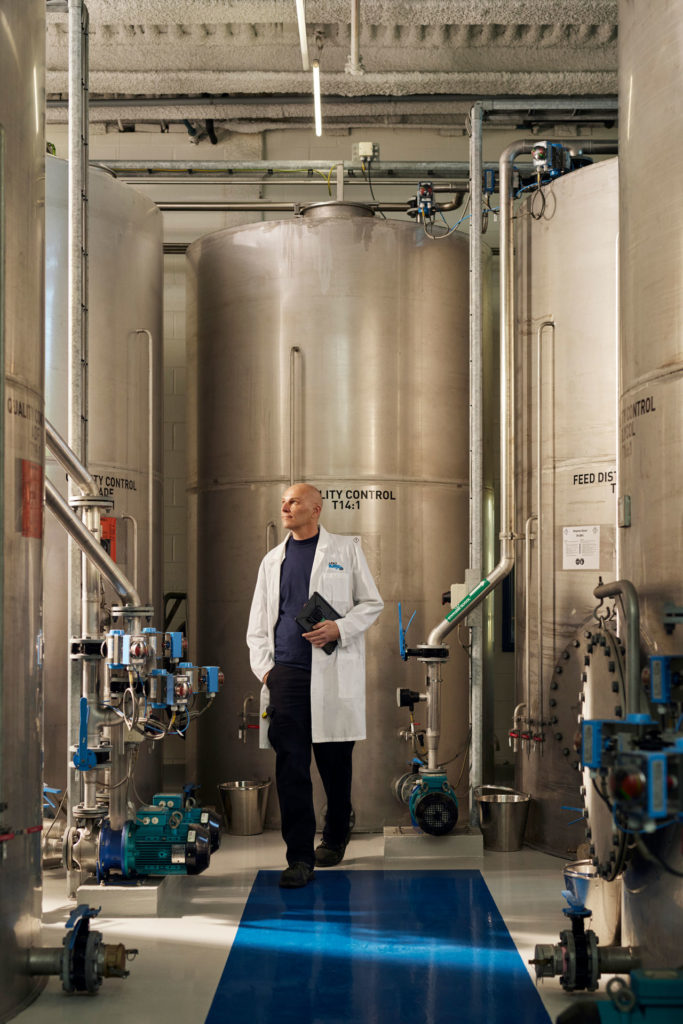Estimated reading time 10 minutes, 26 seconds.
Mario Lépine doesn’t want to lose touch with his company’s daily operations. Every once in a while, he hops into MAG 21, his favorite deicing truck, and expertly deices an aircraft at Montreal’s Trudeau International Airport (YUL).
As the owner of Aero Mag, the company he founded in 1994 at Montreal-Mirabel Airport (YMX), Lépine is easily recognizable on these occasions as the only deicing agent wearing a business suit. Naturally, his staff are never surprised to see him working on the deicing pad. While he’s now largely focused on strategic planning as company president and CEO, Lépine is not the type to eschew getting back to the basics.
After 28 years in business, it’s evident that Lépine has a good thing going. Since that first Mirabel location, Aero Mag has expanded and is now operating at 17 airports: seven in Canada, eight in the U.S., and two in the U.K. Mario Lépine has been joined at the management table by daughter Marie-Élaine and son Gabriel, both of whom started at the company in entry-level roles.

“My brother, now the director of operations, started working here in the summer, deep cleaning the trucks with a toothbrush,” said Marie-Élaine, currently the company’s director of administration and corporate affairs. “Myself, I started deicing aircraft in the open bucket, wearing a full suit and gloves. It is something we all like to do for sure.”
While working for a Mirabel-based airline in the early 1990s, their father Mario saw a more effective way to deice aircraft, with increased emphasis on safety, efficiency, and the environment.
Some early industry firsts for Aero Mag included the North American launch of single-operator deicing units, as well as the first implementation of engine-on deicing procedures for a variety of aircraft types. In 1997, Mario Lépine utilized his industry connections to design the first centralized deicing facility at YUL, an operation that Marie-Élaine said is still considered one of the most technologically advanced in the world.
Today, Aero Mag employs about 1,500 people during the winter high season. The company offers a full scope of deicing solutions, ranging from servicing one customer at an airport to all airlines on a field, as well as managing and operating deicing centers. Aero Mag also specializes in the recovery, recycling, and reuse of used deicing fluids.

Aero Mag became the world’s first operator of an electric deicing truck in December 2020. Here it is in operation at YUL. Aero Mag Photo 
Aero Mag glycol recycling facility in Montreal (YUL). Aero Mag Photo
In fact, the company’s commitment to the environment runs deep, as evidenced by its goal to become carbon-neutral by 2035. To that end, Aero Mag became the world’s first operator of an electric-powered deicing truck.
“The first electric truck arrived in Montreal in December 2020,” Marie-Élaine told Skies. “Through numerous discussions with [airport vehicle manufacturer] Vestergaard, we determined that the electric unit is an essential component in our goal of becoming carbon-neutral. The first truck performed really well. There are a lot of different temperatures and conditions in Montreal. We operated it in extreme cold, snow, and freezing rain, and we were very satisfied with its performance.”
The electric deicing truck features cutting-edge technologies, including a 360-degree camera and a new radar system for the fluid applicator nozzle, which positions it at the optimal distance from the aircraft. In 2022, Aero Mag will have three electric trucks in operation. The second unit will soon be in operation at a Canadian international airport, said Marie-Élaine. Eventually, she added, electric trucks will replace the company’s 330-plus conventional gas-powered deicing vehicles, the vast majority of which are single-operator units.
Other green initiatives at Aero Mag include the use of forced air technology, which blows loose snow off an aircraft’s surfaces prior to treatment, permitting more effective deicing while using less fluid. The forced air procedure was pioneered by Vestergaard in association with Aero Mag, who worked closely with the manufacturer to develop the new technology.
The Montreal-based company has also received accolades for its recycling of used glycol at YUL. Its onsite recycling plant collects spent fluid that flows into underground pipes and then into tanks. It returns that fluid to its original state, with concentration levels reaching 99.5 percent. Aero Mag’s recycling center has the capacity to store two million litres (528,344 gallons) of concentrated deicing products.
Where extensive facilities like the one in Montreal do not exist, Aero Mag uses ground recovery vehicles, or GRVs, to suck up used fluid and deposit it in a secured area.
“Over the years, we’ve tried to find solutions that are the most efficient and favorable to the environment,” said Marie-Élaine. “We continuously try to challenge ourselves and brainstorm about what we can do better. For example, when we started the Montreal recycling facility in 2014, the energy produced from that facility was used to heat the garage for the trucks. One of our objectives is always to reduce our environmental footprint — even small actions can make a difference.”
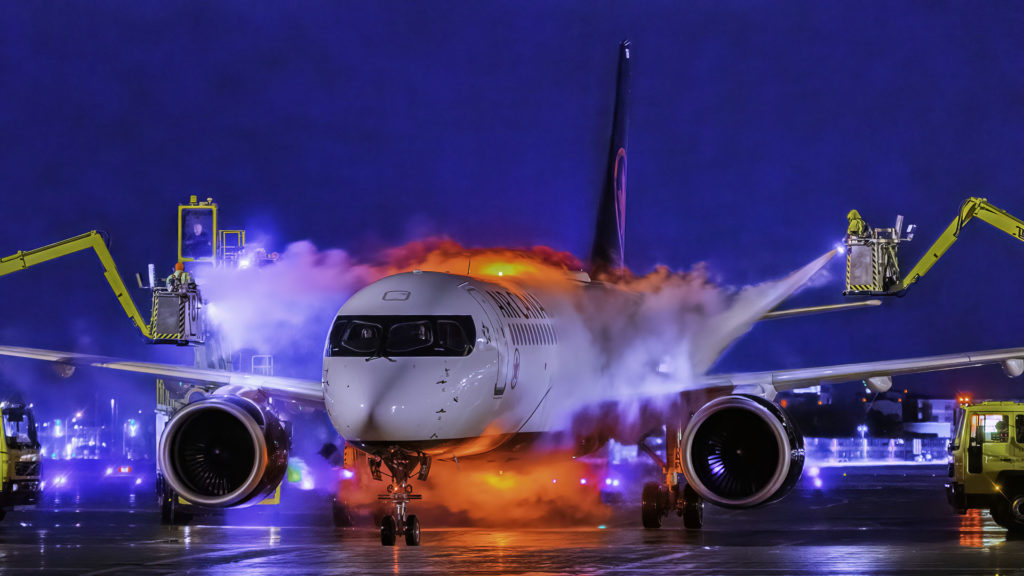
In fact, Aero Mag received the YVR Sea Island Climate Smart Certification and the 2017 Clear Skies Award for its Vancouver operation, as well as the Environmental Merit Award from Aéroports de Montréal, which operates Montreal’s Trudeau and Mirabel airports.
Operations and Innovation
On average, it takes three to six minutes to remove frost from an aircraft using a heated glycol spray. Pilots make the initial deicing request and decide which treatment they want and where it should be applied, explained Marie-Élaine.
Options include Type 1 fluid, an orange deicing product, or Type 4, a green anti-icing product used when the aircraft will encounter active precipitation while waiting to take off.
Deicing treatments can be applied at the departure gate, a dedicated deicing facility (simply an area that has been designated for the procedure), or at a centralized deicing facility.
“For example, once the aircraft arrives at a centralized deicing facility, we have a team of people in position,” said Marie-Élaine. “One person speaks to the pilot who decides on the treatment and then confirms that the aircraft brakes are set.”
From there it’s an intricately choreographed performance, as deicing trucks — most of them single-operator — move around the aircraft, applying the product that enables aircraft to operate safely in harsh winter weather.
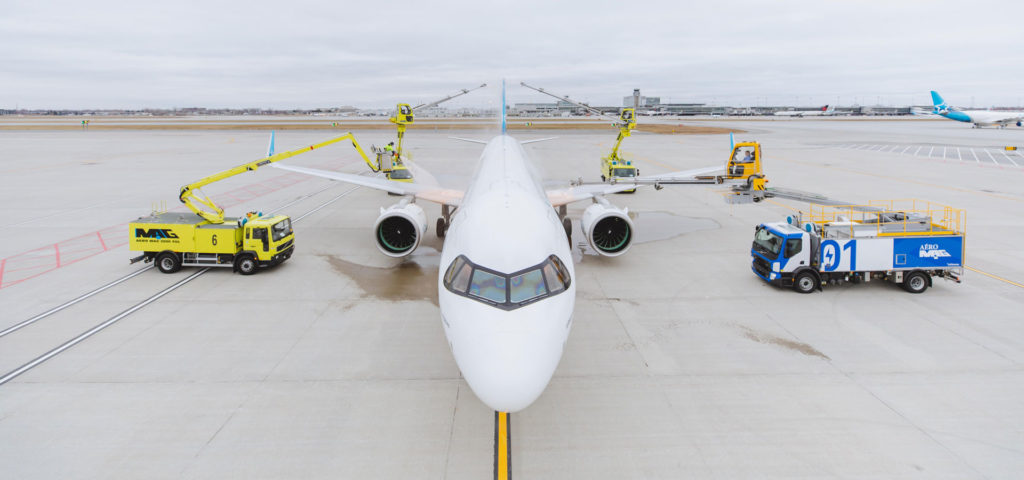
“Our deicing units have the technology to get close to the wing surface, so the heat of the fluid deices the aircraft and removes contamination. We keep the nozzle as close to the aircraft as possible to optimize the efficiency of the deicing operation,” explained Marie-Élaine.
In other initiatives, Aero Mag has developed its own proprietary data management technologies, including live software to record when a deicing application starts and finishes, and the quantity of fluid used.
In recent years, the company has observed more drastic weather conditions, most likely attributable to ongoing climate change.
“We see a lot of peaks and valleys,” reported Marie-Élaine. “We see more wet snow and freezing rain. We adjust the concentration of the glycol fluid depending on the temperatures and type of precipitation.”
As the Lépines contemplate Aero Mag’s future, she added, the goal is to retain the company’s leading role in deicing operations, while continuing to develop data technology, improve cost efficiencies, and further enhance glycol recycling facilities.
“We want to increase our electric fleet and thus achieve our strategic goal of being carbon neutral by 2035,” said Marie-Élaine. “Here at Aero Mag, we are a family-owned company, and consider all of our employees family. Mario himself takes the ‘open door policy’ to the next level; he is extremely approachable, and all employees are comfortable coming and speaking with him, although Covid has certainly changed some things. Regardless, all of our employees would say he is passionate about what we do here.”
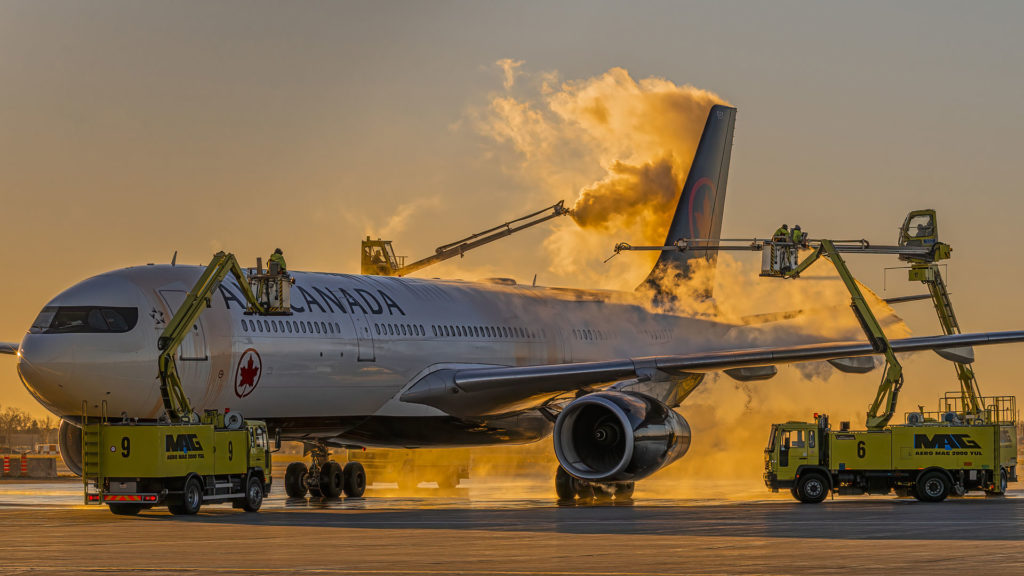
Innovative thinking and a relentless commitment to safety, efficiency, and stable growth have always been Aero Mag’s pillars of success. Add to that the company’s dedication to providing a customized solution for every client, and it’s clear the Lépine family has pioneered a proven recipe for success.
“It’s a big family and we all put in the necessary effort to ensure top quality service and a one-stop, fully integrated solution,” concluded Marie-Élaine.
